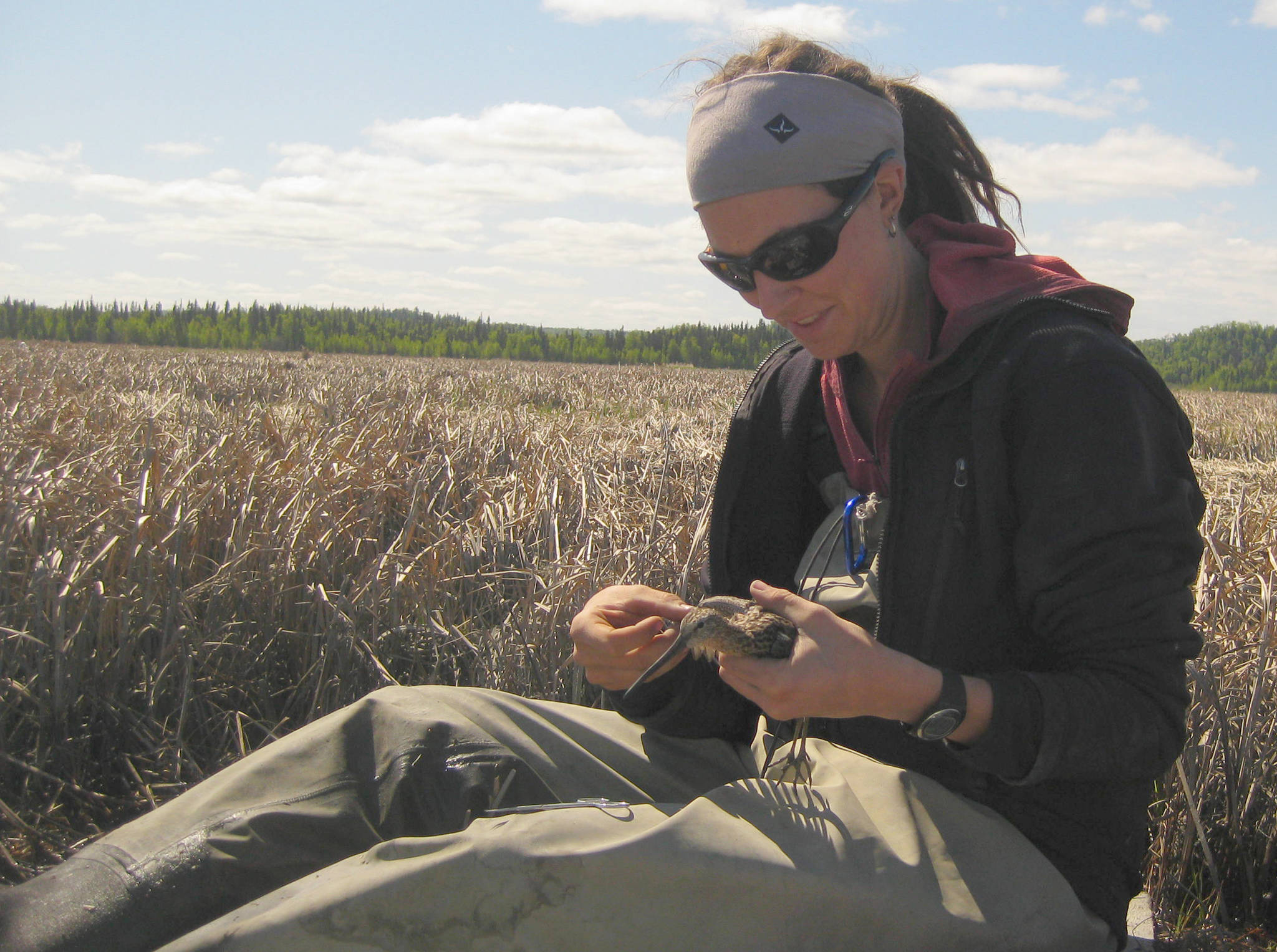By JOHN MORTON
These days, with internet search engines making information so accessible, it’s easy to forget how tedious the collection of scientific data can be. Certainly in the natural world, where there is a lot of inherent variation among seasons or between years, it shouldn’t be surprising that field studies usually take at least two years. And high variation across landscapes or within populations of the same species demands repeated sampling sometimes over large and remote areas, especially in Alaska.
These attributes make statistically rigorous fieldwork in the natural sciences so difficult for agency biologists to accomplish. Most biologists, such as myself, have other duties to juggle at our workplace. We frequently research multiple issues at any given moment, respond daily to many queries from colleagues and the public, plan workshops or public meetings, write reports and articles, apply for permits, receive or provide training, give presentations, work on contracts, and deal with sometimes mind-numbing administrative tasks required of government employees.
The solution, at least for me, is to have graduate students. These young men and women are intelligent and motivated, with their sole purpose at this point in their life to collect enough data to defend their master’s thesis or doctoral dissertation.
It is wonderful to have them around the office because their passion reminds me of why I got into wildlife ecology in the first place. And our intellectual discussions over coffee or beer (after hours) keep me engaged and entertained in real time.
My first graduate student at the Kenai National Wildlife Refuge was Caleb Slemmons from Miami University in Ohio. When he started in 2005, the refuge was all but ignoring invasive plants.
By the end of his tenure, Caleb had conducted the first of many exotic plant surveys, produced a brochure for identifying common invasives, and helped us begin the aggressive management program we now have in place. Caleb subsequently founded the Kenai Peninsula Cooperative Weed Management Area partnership through the Homer Soil & Water Conservation District.
Matt Bowser and Dawn Magness both completed their masters and doctorate, respectively, at the University of Alaska Fairbanks in 2009. Matt processed 15,000 arthropod specimens to help populate our current inventory of over 2,000 species. Matt is now the refuge’s entomologist and, I believe, the only one in the entire National Wildlife Refuge System!
Dawn’s dissertation on how the NWRS, its managers and biologists are poised to address climate change was ahead of its time. She showed how risk models could be used to systematically manage the more than 500 refuges to ensure an ecologically coherent response to climate change. Dr. Magness is now the refuge’s landscape ecologist, one of only a few in the entire U.S. Fish and Wildlife Service.
Kim Sager also earned her graduate degree in 2009 from the Alaska Pacific University. Her thesis evaluated the habitats of three passerines that nest at different forest canopy heights on the Kenai Peninsula: Yellow-rumped warbler (high), Varied thrush (medium) and Dark-eyed junco (low). Kim now works for the Alaska Department of Natural Resources.
Also in 2009, Andy Baltensperger completed his thesis at Colorado State University on why American marten colonized the Kenai Lowlands in recent years. He showed that the range expansion was likely due to warmer winters, particularly at night, which allow marten to survive even without an insulating snow pack. Dr. Baltensperger now works for the National Park Service.
As a University of Delaware graduate student, Sadie Ulman completed her thesis on shorebird use of Chickaloon Flats in 2012. As part of her study, she quantified vegetation change on this estuary as it rebounded from the 1964 Alaska earthquake. Sadie is now a Research Associate with the Alaska SeaLife Center in Seward.
As part of his doctoral program at UAF, Tim Mullet defended his dissertation on the ecological effects of snowmachine traffic in 2014. Along the way, Tim developed a creative approach to modeling the winter “soundscape” across the 2-million-acre Kenai National Wildlife Refuge, perhaps the first to model the distribution of different sounds over such a large area. Dr. Mullet is now the ecologist at Kenai Fjords National Park.
My current graduate student, Tracy Melvin from Michigan State University, works closely with me to figure out smart approaches to steward ecological outcomes in response to a warming climate. She is considering ways of not only sustaining biodiversity, but increasing it as part of her doctoral research.
Other graduate students working on the Kenai refuge over past decades have helped answer questions about wolf pack dynamics in response to harvest management, occurrence and distribution of exotic earthworms, public perceptions of brown and black bears, moose browse regeneration in response to prescribed fire and mechanical treatments, and lichen response to caribou browsing.
Graduate students helped estimate rates of drying wetlands and rising treeline, mean fire return interval in black spruce, and carbon loss in peatlands.
I hope you now appreciate that graduate students contribute much to our understanding of the ecology of the Kenai Peninsula, as well as to the broader arena of wildlife science and management. Many have ended up contributing even more by becoming part of our communities as professional biologists with local agencies and organizations. Precisely because they had to work really hard collecting scientific data to earn their degrees, we become the recipients of these gifts — it’s a win-win outcome!
Dr. John Morton is the supervisory biologist at Kenai National Wildlife Refuge. Find more Refuge Notebook articles (1999-present) at https://www.fws.gov/Refuge/Kenai/community/Refuge_notebook.html.

